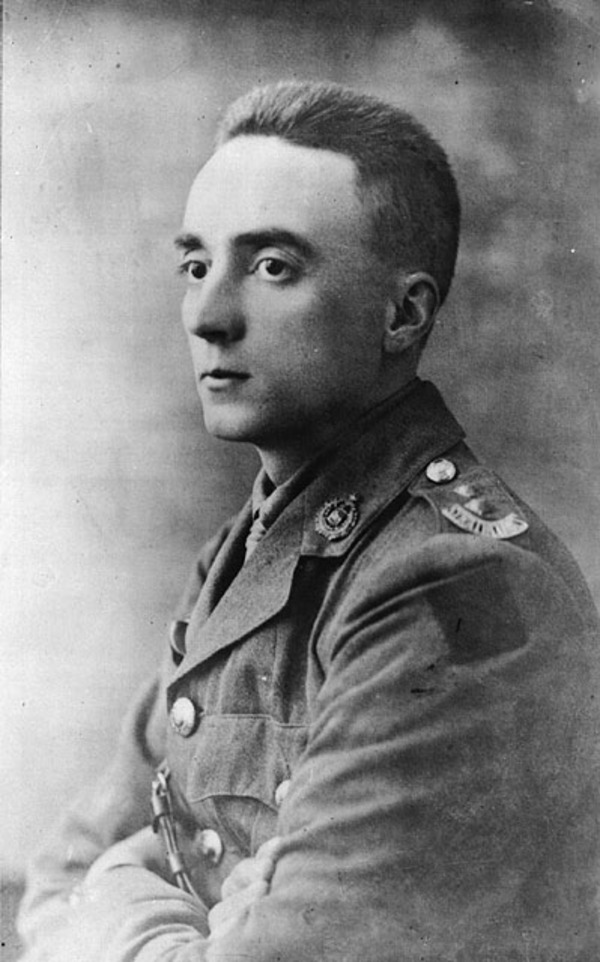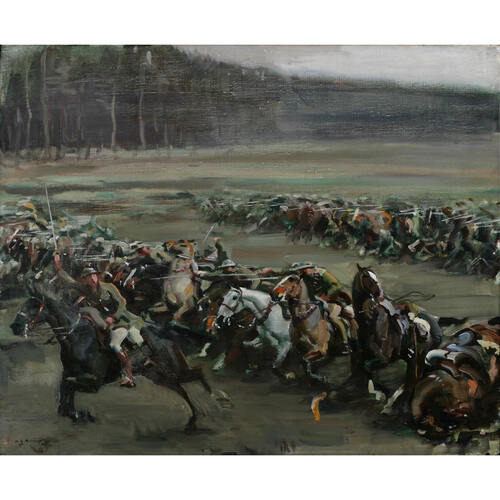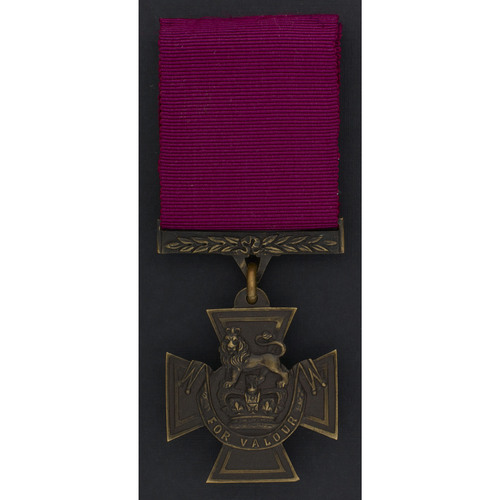FLOWERDEW, GORDON MURIEL, militiaman and army officer; b. 2 Jan. 1885 in Billingford, near Diss, England, eighth son of Arthur John Blomfield Flowerdew, a farmer, and Hannah Symonds; d. 31 March 1918 near Moreuil, France.
One of 14 children, Gordon Flowerdew was educated from 1894 to 1899 at Framlingham College in Suffolk, where he shone more on the playing-fields than in the classroom. After coming to Canada in 1903, he followed opportunity to Duck Lake, Sask., and then to British Columbia, at Queens Bay on Kootenay Lake and finally at Walhachin, where he found work in a general store and post office. He apparently turned his hand to many things, managing a butcher shop and working as an orchardist and rancher. In summer 1911 he joined the Regiment of Cavalry (31st Regiment, British Columbia Horse), and at the annual militia camp the following year he distinguished himself by setting records in shooting competitions and steeplechasing. In Walhachin he had become a local hero in October 1911 by helping to apprehend two robbers after a mounted chase. So it came as no surprise that upon the outbreak of war he volunteered for service overseas. He was appointed a lance-corporal in Lord Strathcona’s Horse (Royal Canadians), under the command of Archibald Cameron Macdonell*.
After training in England, the LSH embarked for France in May 1915 as part of the Canadian Cavalry Brigade. The Western Front having been locked up in trench warfare near the end of 1914, there was little scope for the cavalry to practise its skills, and the brigade operated as infantry until 1916, when it was reconstituted as a mounted unit comprising the LSH, the Royal Canadian Dragoons, and the Fort Garry Horse. The brigade was intended to follow up a breakthrough at the Somme, but the complete lack of success there left it idle. It was not until the German withdrawal of spring 1917 that the cavalry was employed in one of its traditional roles – the pursuit – during which Lieutenant Frederick Maurice Watson Harvey of the LSH won a Victoria Cross. In November 1917 the brigade was detailed to exploit success in the tank offensive at Cambrai, but a well-mounted counter-attack spoiled the operation. Winter saw the Western Front settle back into deadlock.
A German offensive, launched on 21 March 1918, was more successful, almost overwhelming the 5th British Army, and with the front somewhat fluid the cavalry became valuable once again, using its mobility to reinforce hard-pressed infantry units. On 27 March the Canadian Cavalry Brigade was assigned to the 2nd British Cavalry Division, and three days later was ordered to recapture Moreuil Wood, which had recently fallen to the German advance. The plan was for the Dragoons to assault with the LSH in support and the Fort Garry Horse in reserve, and the Dragoons were soon heavily engaged.
It was at this moment that the LSH’s C Squadron, commanded by Flowerdew – who had been promoted sergeant in 1915 and temporary lieutenant in 1916 – began circling the wood to attempt to trap the enemy. The troop was confronted by two lines of Germans, “each about sixty strong, with machine guns in the centre and flanks.” Given the choice between retreat and attack, either of which might lead to substantial losses, Flowerdew chose the latter. In a cavalry charge reminiscent of Waterloo or Balaklava, C Squadron inflicted heavy casualties on the enemy and forced the survivors to withdraw, but lost 70 per cent of its own troopers doing so. Flowerdew himself, wounded in both thighs, died the next day. He was awarded the Victoria Cross, a decoration made with the bronze from cannon captured in a similarly brave but catastrophic cavalry charge of the Crimean War.
Flowerdew is of some interest both for the way he lived and for the manner of his death. Like many other young Britons, he had come to Canada at the turn of the century to seek his fortune without giving up his British roots and had volunteered to fight for the empire in 1914. Tragically, but also typically, he died carrying on a military tradition centuries-old but set in a different, industrialized style of warfare.
General Register Office (London), Reg. of births, Diss (Norfolk), 2 Jan. 1885. NA, RG 150, Acc. 1992–93/166. C. E. Connolly, “The action of the Canadian Cavalry Brigade at More[ui]l Wood and Rifle Wood, 1918,” Canadian Defence Quarterly (Ottawa), 3 (1925–26): 8–18. Framlingham College register, ed. John Booth ([3rd ed., Framlingham, Eng.?], 1949). W. B. Fraser, Always a Strathcona (Calgary, 1976). Edward Green, “The last great cavalry charge,” Cavalier (Greenwich, Conn.), February 1961: 21–23, 70–75. J. M. McAvity, Lord Strathcona’s Horse (Royal Canadians): a record of achievement ([Toronto], 1947). Nicholson, CEF. J. E. B. Seely, Adventure (London, 1930). Joan Weir, Walhachin, catastrophe or Camelot? (Surrey, B.C., and Blaine, Wash., 1984).
Cite This Article
William Rawling, “FLOWERDEW, GORDON MURIEL,” in Dictionary of Canadian Biography, vol. 14, University of Toronto/Université Laval, 2003–, accessed April 28, 2025, https://www.biographi.ca/en/bio/flowerdew_gordon_muriel_14E.html.
The citation above shows the format for footnotes and endnotes according to the Chicago manual of style (16th edition). Information to be used in other citation formats:
| Permalink: | https://www.biographi.ca/en/bio/flowerdew_gordon_muriel_14E.html |
| Author of Article: | William Rawling |
| Title of Article: | FLOWERDEW, GORDON MURIEL |
| Publication Name: | Dictionary of Canadian Biography, vol. 14 |
| Publisher: | University of Toronto/Université Laval |
| Year of revision: | 1998 |
| Access Date: | April 28, 2025 |






